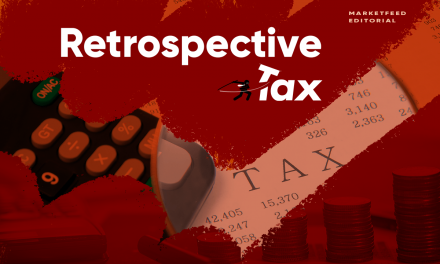India’s Economic Growth in the 1980s


Aanchal Agarwal
India is considered to be one of the fastest-growing economies in the contemporary world with economic growth of 6% per annum. However, in the post-independent era, especially between the 1950s to 1970s, India had experienced a ‘sluggish’ growth of 3 to 4 percent per annum. India’s journey from a stagnant economy to that of a robust one perplexes scholars to a complex question: was India’s growth due to neoliberal policies or due to a unique pattern of state intervention? On one hand, theorists like Srinivasan and Tendulkar [2003] believe that India’s economic liberalization took place in 1991 with pro-market policies; Kohli on the other hand argues that India’s growth accelerated in the 1980s due to pro-business policies. The latter perspective on pro-business elaborates on the economic altercations that took place in the 1980s, which helps us answer the modern-day impacts of the same. This article will first discuss the features of pro-market and pro-business policies to understand which set of policies was the Indian economy more consistent with. The idea that ‘Changes in political ideology, structure, and policy (during the 1980s, after Indira Gandhi’s re-election) resulted in three direct economic impacts in the Indian economy: Increased state spending on businesses, “taming” the labor, and lastly, an increase in productivity of labor and investment’ will then be substantiated in the essay. Lastly, this essay will logically argue how these economic changes of the 1980s are evident in India’s contemporary economic performance.
According to Srinivasan and Tendulkar [2003], the slump economic trend between the 1950s-1970s was a product of a highly interventionist state and of a misguided import substitution trading regime, which broke in 1991. They believe this happened because India adopted a pro-market strategy that promoted economic liberalization, leading to capital accumulation and efficiency that resulted in high economic growth. However, the primary flaw with this argument is that the economic growth had started in India a decade earlier [Nagaraj 2000; De Long 2003] i.e. in the 1980s. Therefore this fact indicates that a further evaluation of the events of the 1980s is important to determine what exactly led to India’s economic growth. Kohli in his paper ‘Politics of Economic Growth in India’ [Kohli 2006] identifies the Indian economy in the 1980s to be following the pro-business model, which constitutes of three basic features: the shift from left-leaning, anti-capitalist rhetoric towards a right-leaning state intervention; prioritizing economic growth by active engagement of the state with capitalists; and lastly, implementing policies to mitigate supply and demand constraints faced by established businesses. To define the pro-business theory, Kohli establishes a ‘convergence of views between the state and the business owners with regards to economic development, and this showcases the influence of the rightward political ideology on the policies implemented, which affects the economy’s growth. This essay will elaborate upon this shift in political ideology, structure, and policy in India, during the 1980s, and their implications on the economic performance, which was not just restricted to the 1980s, but is also evident in our present times.
The 1980s was a decade where Indira Gandhi and Rajiv Gandhi shifted the Indian economy to function on the economic principles of the Asian Tigers, which are based on the pro-business model, affecting investment, productivity and privatization. In the pre-1980 Indira Gandhi’s anti-poverty policies were strenuous to practically implement in India, due to which the ‘ineffective socialism’ hurt the economic growth of India. Thus, during the national emergency, in the years 1975-77, Indira Gandhi started disassociating herself from “socialism” and ‘distributive justice’, and started explicitly committing to right-leaning state intervention by sorting alliance with big Indian businesses, thereby committing to economic growth and ‘maximizing production’. The “growth first” ideology was supported using policy reforms that directly impacted the legislative policies, the financial and economic structure, and the labor market. The legislative reform was evident with the abandonment of the Monopolies and Restrictive Trade Practices Act. With this, the government removed the licensing issues which allowed big businesses to expand in core industries like chemicals, drugs, ceramics, cement, and power generation- which was previously controlled solely by the public sector. To support this change the government also altered the financial structure in favor of the businesses. Apart from tax concessions to businesses, the state also made policy changes to encourage new investments by raising resources directly from the public. These changes were being made keeping two points in mind: first, natural inefficiency of the public sector means less spending on it; second, “maximizing production” could be reached by maximizing business growth. The success of the policy reforms is reflected in Pranab Mukherjee’s 1984 speech when he called the atmosphere of the 1980s an “investment climate”. Moreover, he appreciated the policies because they encouraged public saving, which therefore resulted in efficient corporate investment- as there was a 170% increment of capital issued by corporates in just the following three years. Lastly, policies to further expand the power of the capitalists were done by “taming labor” to improve their efficiency by ‘better capacity utilization. Though Indira Gandhi was a leader of the left and had gotten popularity based on her ‘garibi hatao’ slogan, she put the “national situation” ahead of labor interests and therefore discouraged strikes, and ‘gheraoes’, “go slow” movements by implementing special legislative policies. To summarize, the policy reforms of the 1980s, we see a structural change in legislation, financial and labor matters, which downplays redistributive concerns but prioritizes economic growth. The convergence of big businesses and government ideologies on growth, limited growth of the public sector industries, adopted an anti-labor stance, and demoted significance of economic “planning”.
The evaluation of the policies passed under the Indira Gandhian era is because of the impact they had on contemporary India. Firstly, even after her governance, Rajiv Gandhi continued the “pro-business” model, however, the “pretense” of socialism was now totally dropped and instead led to a “liberal” beginning. However, our analysis proves that this “liberal” phase which is the support of business capitalists was initiated in 1980 itself. Secondly, the influence of the business lobby is reiterated when the Indian government complies with their protests of ‘protecting them from cheap foreign competition. From this, it became evident that the government’s first and foremost commitment was towards India’s economic growth, rather than laissez-faire. Before the 1980s the business lobby did not have such influential power in politics. However, Indira Gandhi’s rightward policies changed this notion. Lastly, the government kept up a public investment which boosted infrastructural developments [Kohli 2004]. By lowering taxes to the middle class, the government further boosted demand, resulting in an ease of supply constraints.
To conclude, the political events of the 1980s greatly influenced economic growth, which had both short-term and long-term effects. Few short-term impacts of these policies were: the building stock of technology, efficient management in the economy, establishment of producer networks, and creation of sufficient demand and tax base. However, few long-term impacts were: increasing efficient investment [Virmani 2004 B], and increasing total productivity. Also, an enhanced role of the private sector not only limited the inefficiencies of the public sector industries but over time allowed computer and electronic sectors in India to flourish extensively. The precise calculation of the economic performance of the 1980s in contemporary India remains ambiguous, this essay with its best efforts has tried to showcase that, with the adoption of the pro-business model, India successfully achieved economic growth in the 1980s.
Aanchal Agarwal is pursuing her Masters’s in Public Policy (MPP) from National Law School Indian University, Bangalore. She is an Economics graduate from O.P. Jindal Global University and is passionate about sustainable and inclusive growth, and poverty, amongst other social issues, and implore their policy implications. It is her professional endeavor to connect data to policy. (The opinions expressed in this publication are those of the author. They do not purport to reflect the opinions or views of The Policy Observer or our members.)
Related Articles
The blunder of retrospective tax
The current crisis has hit the poor and corroded their savings. It is crucial to provide relief to the poor not only because of the intrinsic value of alleviating the effects of poverty but also because of their high spending propensity. A demand deficiency existed even before the COVID-19 pandemic which has only worsened.
Indian and Chinese Economies Post-liberalisation
It is important to acknowledge that the works have limited scope as we embark on understanding the crucial differences. Many questions have remained unanswered in terms of why there is such a difference. The two subsequent works following Desai have probably intended to focus on “what” are the differences rather than “why”. In the case of Desai, the issue seems to have been taken up more broadly instead of reflecting on its complex character. For example, much less attention has been paid to the incentives that FDIs found in China as compared to India.
Feasibility of Vaccinating India
Having just tided over the Second Wave of COVID-19 and after going through prolonged lockdowns, the Third Wave must be prevented as much as possible. The effects of which may drive India’s double crisis to further extremes. However, looking at the vaccination effort and the sluggish attitude towards the procurement of vaccines, the situation looks grim.









